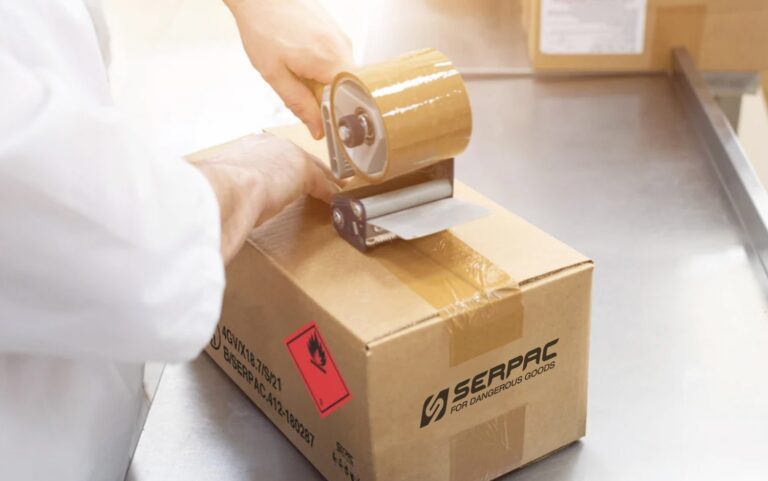Hazardous material transportation is a complex and strictly regulated process that requires meticulous attention to detail at every step. UN 4G boxes have solidified their importance in this industry thanks to their standout features, ensuring the safe and compliant transit of hazardous material.
For safety managers, compliance officers, and logistics professionals, understanding the advantages of these boxes is not just advisable but crucial.
1. Enhanced Safety
● Sturdy Construction
UN 4G boxes feature a robust, multi-layered design made to withstand rough handling and harsh environmental conditions. Whether it’s corrosive substances, flammable liquids, or toxic materials, the durability of these boxes ensures the containment of the hazardous cargo, reducing the risk of leaks or accidents.
● Secure Containment
Built-in security measures such as locking mechanisms and reinforced edges provide an added layer of protection. The dual closure systems ensure that the boxes stay sealed, safeguarding not only the cargo but also the individuals involved in handling and transport.
● Compliance with UN Regulations
The structural integrity and performance specifications of these boxes comply with United Nations regulations, making them the ideal choice for shipping hazardous materials across the globe. This compliance means that the packaging has undergone and passed stringent tests to guarantee protection under real transportation conditions.
2. Easy Handling and Transportation
● Lightweight Design
Despite their formidable build, a UN 4G box is designed to be lightweight, allowing for easier lifting and maneuvering. This simplicity in handling reduces the potential for accidents associated with heavy lifting and expedites the loading and unloading processes.
● Ergonomic Features
UN 4G boxes come with user-friendly ergonomics, including handholds and forklift-accessible features, ensuring that the boxes can be safely transported without causing strain or injury to workers.
● Stackable and Space-Efficient
The uniform shape and stackable design of these boxes save valuable space in storage and during transportation, making them a preferred choice for companies aiming to optimize logistics and storage capacities.
3. Versatility
● Suitable for Various Hazardous Materials
UN 4G boxes are used to transport a wide array of hazardous materials, from Category X materials that pose very great risks to Category I materials with lower risks. This versatility means that a variety of dangerous goods can be accommodated using the same packaging solution.
● Compatibility with Different Modes of Transportation
These boxes are not limited to just one mode or route but can seamlessly transition across different forms of transportation, from ground to air to sea, without compromising on safety or convenience, making them a versatile and practical solution for the modern supply chain.
4. Cost-Effectiveness
● Reduced Risk of Damage and Spills
The utilization of UN 4G boxes significantly decreases the likelihood of product damage or spills, which can be catastrophic both in terms of human safety and financial loss. The investment in these packages translates into long-term cost savings through the reduction of waste and accidents.
● Minimized Liability and Fines
Using a UN 4G box for packaging, companies mitigate the risk of non-compliance fines and reduce their liability in the event of incidents. The adherence to proper packaging standards ensures legal protection and operational integrity.
● Long-Lasting Durability
The resilience and longevity of UN 4G boxes mean they can be reused multiple times, reducing the need for frequent repurchasing and contributing to sustainable logistics practices.
5. Regulatory Compliance
● Meets UN Packaging Requirements
UN 4G boxes are specifically designed to meet the stringent packaging regulations set forth by the United Nations, ensuring that these packages protect the environment and human health during transit.
● Ensures Proper Labeling and Markings
Compliance isn’t just about the box. It’s also about the visibility and clarity of markers, labels, and placards. UN 4G boxes are designed to accommodate these visual warnings to keep all stakeholders informed and compliant.
● Simplifies Documentation and Inspections
The standardization of these boxes facilitates the preparation of shipping documentation. In the case of inspections, familiarity with the packaging streamlines the process, avoiding unnecessary delays or hiccups in the supply chain.
Conclusion
In the hazmat transportation sector, the choice of packaging can mean the difference between safe, legal transport and costly, hazardous notoriety. UN 4G boxes emerge as a reliable and practical solution, offering more than just safe transport – they contribute to smooth logistical operations, cost-efficiency, and adherence to the strictest guidelines.
Incorporating UN 4G boxes into your hazardous material transport strategy is a proactive move that ensures your materials are contained, your workforce is safe, and your operational pipeline remains compliant.

